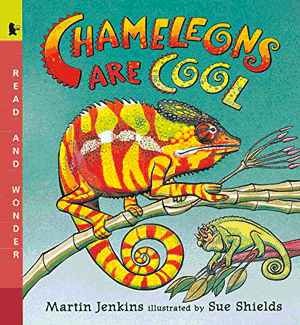Menu
-
- Home
-
About Us
-
The Approach
-
Linking Language & Literacy
-
MindWing Learning
-
Learning Resources
-
SHOP
-
Blog
-
- About MindWing
- Our People
- Contact Us
- Your Account
- Login
-
Spain (EUR €)

Chameleons Are Cool! Listing, Describing & Art
April 13, 2018 3 min read
 Who doesn’t love chameleons? I remember when I saw this book in our school library many years ago! I couldn’t wait to use it with our second grade students featuring the SGM List Map and Descriptive Map. At the time, I travelled from class to class, K-2, and brought SGM® Teacher Marker and Braidy the StoryBraid®, narrative and expository elements, into the classrooms.
Who doesn’t love chameleons? I remember when I saw this book in our school library many years ago! I couldn’t wait to use it with our second grade students featuring the SGM List Map and Descriptive Map. At the time, I travelled from class to class, K-2, and brought SGM® Teacher Marker and Braidy the StoryBraid®, narrative and expository elements, into the classrooms.
 This time around, I created an informational sheet for grade 2 from various sources to begin our lessons. Notice how the information could be easily entered on an SGM Descriptive Map using the categories Physical Appearance, Habitat, Food and Eating, Young, and Special Characteristics. We completed the project in three sessions.
This time around, I created an informational sheet for grade 2 from various sources to begin our lessons. Notice how the information could be easily entered on an SGM Descriptive Map using the categories Physical Appearance, Habitat, Food and Eating, Young, and Special Characteristics. We completed the project in three sessions.
-
Introduction: Show a short segment on chameleons AND/OR pictures of chameleons. Below are two short videos to get you started that we came across on Youtube, but there are many to choose from. Click on the picture to view:
- Read the prepared informational sheet with the students. (Included in download file.)
-
State: “That is a lot of information. I have a way to organize the information to make it easier to remember!” Then, map out the information as shown below on a whiteboard, discussing with the students the categories used. Students can orally participate in this activity. This is a great modeling activity to lead to asking students to choose an animal and create a report.

We have several links below that you may be interested in if you plan to study armadillos, cheetahs, and koalas:
- Introduce the book Chameleons are Cool by Martin Jenkins. Read the selection—which I know will be a hit—to the students for enjoyment. Don’t forget to place the book in your class library when the project is completed as it is one of those books that students will re-read frequently!
- Ask: “What have you learned about chameleons?” Have students TURN and TALK with a partner. Share orally with the group.
-
 Distribute a List Map and ask students to list 5 things they learned about chameleons, answers will vary. (Map included in complete download file.)
Distribute a List Map and ask students to list 5 things they learned about chameleons, answers will vary. (Map included in complete download file.) -
 Introduce the art project. (Check out Pinterest for additional ideas to suit your needs!)
Introduce the art project. (Check out Pinterest for additional ideas to suit your needs!)
- You will need:
- Cellophane, available from craft stores, one color or various colors to choose from, cut into the size of the finished chameleon picture
- Crayons
-
 Picture from the chameleon download
Picture from the chameleon download
- Small moveable eyes available at craft stores
- Tape/glue
- Students will:
- Color
- Glue the eye
- Choose and tape the cellophane over the picture at the top so that it can be lifted and put down (reminding us of the chameleon changing its colors!)
- Introduce the Noun Verse activity from Writing and Art Go Hand in Hand To Teach Language Skills by Diane Bonica. Although an older book, copies can still be found and worth the hunt! This is a wonderful resource for teachers.
-
Brainstorm with students adjectives that describe a chameleon and action –ing verbs that relate to chameleons.



- Distribute a “working copy” of the Topic/Adjectives/Action activity sheet.
- Have students use colored pencils or crayons to complete the final copy and mount it on construction paper as shown.
- Invite students to take home the Information Sheet, List Map, Noun Verse, and the art project!
This is one cool project!
And don’t forget these two staples for any early elementary school classroom library:

Leave a comment.
Comments will be approved before showing up.




 Distribute a List Map and ask students to list 5 things they learned about chameleons, answers will vary. (Map included in
Distribute a List Map and ask students to list 5 things they learned about chameleons, answers will vary. (Map included in  Introduce the art project. (Check out Pinterest for additional ideas to suit your needs!)
Introduce the art project. (Check out Pinterest for additional ideas to suit your needs!) Picture from the
Picture from the 

